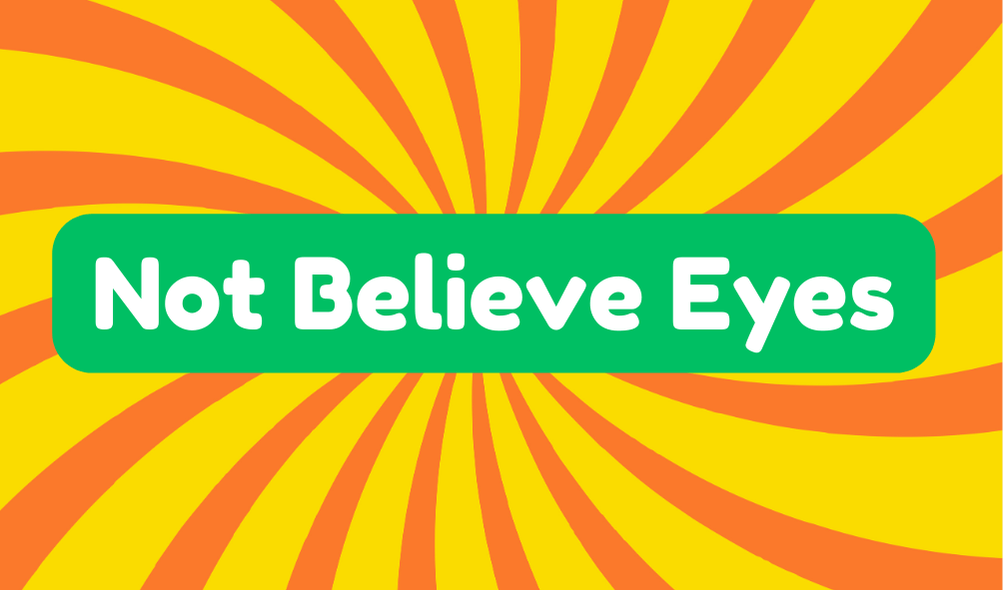When you hear the phrase "I can't believe my eyes," it expresses genuine astonishment at something extraordinary. This reaction often arises during shocking moments, like witnessing a stunning event or an unbelievable feat. Its origins reflect our struggle to accept experiences that defy logic. Today, such expressions are essential as they remind us to question what we see, especially in a world filled with manipulated visuals and misinformation. As you navigate these surprising moments, it's important to maintain a critical perspective. Discovering more about the significance of disbelief can help you understand the world around you better.
Synonyms
When you witness something unbelievable, it's common to feel a rush of emotions. Often, you might find yourself searching for the right words to express that disbelief. Misunderstood expressions can cloud communication, especially with cultural variations in language. Here are some synonyms you might consider:
- Can't believe my eyes/ears – This phrase captures sheer astonishment.
- Unbelievable sight/sound – It emphasizes just how extraordinary the experience is.
- Mind-blowing – This word encapsulates something stunning or shocking.
- Jaw-dropping – Ideal for moments that leave you speechless.
These terms help navigate your feelings, allowing for clearer expression amidst confusion. Remember, these expressions vary across cultures, influencing understanding. So, stay aware and embrace the nuances of disbelief!
Example of Sentences
Experiencing disbelief often leads you to express that astonishment through vivid language. You may encounter surprising events that prompt powerful reactions. Here are some examples of sentences illustrating such moments:
- "When she saw the unexpected meteor shower, her breath caught in disbelief."
- "His eyes widened in disbelief, unable to process the news of the sudden lottery win."
- "Listening to the incredible performance, the audience erupted in disbelief and applause."
- "As the magician vanished, onlookers stood in disbelief, questioning reality."
These sentences highlight the art of expressing disbelief. They demonstrate how shocking images and sounds trigger emotional responses, enabling you to communicate the depth of surprise more effectively. Remember, your reaction defines the impact of the surprising events.
Origin
Rooted in the human experience of witnessing extraordinary events, the phrase "not believe your eyes" captures a profound moment of incredulity. Although the exact origin remains undocumented, it taps into a cultural impact reflecting our response to sensory experiences that defy logic. When we encounter shocking visuals, our brains struggle to reconcile reality. This phrase suggests that what we perceive can be so astonishing that we question its authenticity. It's a fascinating commentary on human perception, highlighting how extraordinary occurrences can lead to disbelief. This skepticism toward our senses opens up discussions about the nature of reality and our emotional responses. Ultimately, it invites you to reflect on those moments that make you pause and reconsider what you thought you knew.
Collocations
The concept of disbelief is often intertwined with specific collocations that enhance its meaning in everyday language. By understanding these collocations, you can articulate disbelief reactions more clearly during astonishing moments. Here are some common phrases:
- Not believe your eyes
- Hardly believe your eyes
- Jaw-dropping astonishment
- Stunned silence
These expressions capture the essence of sheer disbelief, shaping how we communicate our reactions. They serve as tools for emphasizing the extraordinary nature of what we witness. However, it's crucial to use them judiciously; overuse can dilute their impact. Engage thoughtfully with these phrases to convey the unique emotions tied to unexpected events, striking a balance between colorful language and realism in your conversations.
How to Use in Everyday Language
When you find yourself in a jaw-dropping situation, expressing disbelief can add emphasis to your reaction. Everyday expressions like "I can't believe my eyes" or "You've got to be kidding me!" effectively convey your emotional reactions. Using these phrases can elevate conversations, making them more engaging and vivid. However, be aware of your audience; not everyone will appreciate exaggerated disbelief. It's crucial to strike a balance between genuine surprise and overreaction. You might even find that incorporating disbelief into discussions about innovation leads to more dynamic exchanges. So, next time something astounding happens, don't shy away from expressing your astonishment—just make sure it aligns with the moment and audience. This approach makes your communication impactful and memorable.
Why Is It Still Relevant Today?
Everyday scenarios often remind us of our capacity for astonishment, making phrases like "not believe your eyes" relevant even today. The cultural significance of this expression endures, especially in a world saturated with startling media and extraordinary events. We find ourselves constantly bombarded with visuals that invoke disbelief, whether through social media or news outlets. This phrase's emotional impact stems from our instinctual reactions to the surprising or surreal; when we witness something unbelievable, we connect on a deeper level. Yet, in an age of misinformation and digital manipulation, it is crucial to maintain a critical eye. The phrase encourages us to question our perceptions, ensuring we don't fall prey to illusions that distort our reality. Understanding its relevance requires both reflection and skepticism.







